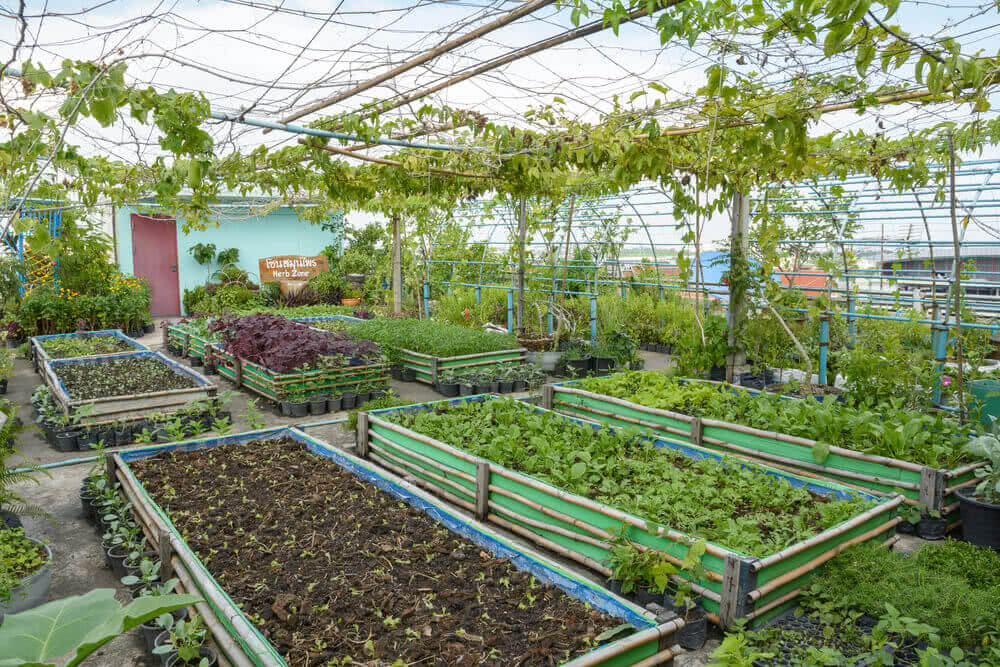Introduction: Terrace gardening, also known as rooftop gardening, is an innovative and sustainable way to harness urban spaces for cultivating plants and vegetables. It offers numerous benefits, from maximizing limited space to providing fresh produce and improving the environment. In this article, we’ll delve into the world of terrace gardening, providing valuable information and insights for aspiring urban gardeners.
Getting Started with Terrace Gardening
Choosing the Right Location
Selecting an ideal location for your terrace garden is crucial. Ensure that the area receives ample sunlight, typically 6-8 hours a day, for optimal plant growth. Assess the structural integrity of your rooftop to support the weight of containers, soil, and plants.
Container Selection
Terrace gardening relies on containers or raised beds. You can use various containers, such as pots, grow bags, wooden crates, or specially designed raised beds. Ensure they have proper drainage to prevent waterlogging.
Soil and Growing Medium
Quality Soil Mix
Use a high-quality potting mix or soilless growing medium for your containers. These mixes are lightweight, well-draining, and enriched with essential nutrients. They also reduce the risk of soil-borne diseases.
Compost and Organic Matter
Incorporate organic compost or vermicompost into the soil to boost fertility and microbial activity. Organic matter enhances water retention and provides nutrients to your plants.
Selecting Suitable Plants
Container-Friendly Varieties
Choose plants that are well-suited for container gardening. Herbs, leafy greens, tomatoes, peppers, and dwarf fruit trees are popular choices. Consider the growth habits and space requirements of your selected plants.
Nurturing Biodiversity
Encourage biodiversity by planting a variety of species. Companion planting can deter pests and improve overall garden health.
Care and Maintenance
Watering
Proper watering is vital for terrace gardens. Water your plants consistently, keeping the soil evenly moist but not waterlogged. Container plants may require more frequent watering than those in the ground.
Fertilization
Use organic fertilizers or compost tea to provide essential nutrients to your plants. Fertilize based on the specific needs of each plant and follow recommended application rates.
Pruning and Pest Management
Regularly inspect your plants for pests and diseases. Prune as needed to promote healthy growth. Employ organic pest control methods, such as neem oil or insecticidal soap.
Sustainability and Environmental Considerations
Rainwater Harvesting
Consider setting up a rainwater harvesting system to collect rainwater for your garden. It’s an eco-friendly way to conserve water and reduce your environmental footprint.
Composting
Utilize kitchen scraps and garden waste to create compost, reducing waste and providing nutrient-rich soil amendments for your terrace garden.
Benefits of Terrace Gardening
Fresh Produce
Terrace gardens allow you to grow your own fresh and organic produce, reducing the need for store-bought vegetables and herbs.
Improved Air Quality
Plants on your rooftop contribute to improved air quality by absorbing carbon dioxide and releasing oxygen, making urban environments healthier.
Conclusion
Terrace gardening is a fulfilling and sustainable way to make the most of limited urban space while enjoying the benefits of fresh produce and a green oasis in the midst of a concrete jungle. By carefully selecting containers, soil, plants, and implementing eco-friendly practices, you can create a thriving rooftop garden that enhances your life and the environment. Whether you’re a seasoned gardener or just starting, terrace gardening offers endless possibilities for urban dwellers seeking a closer connection to nature.


